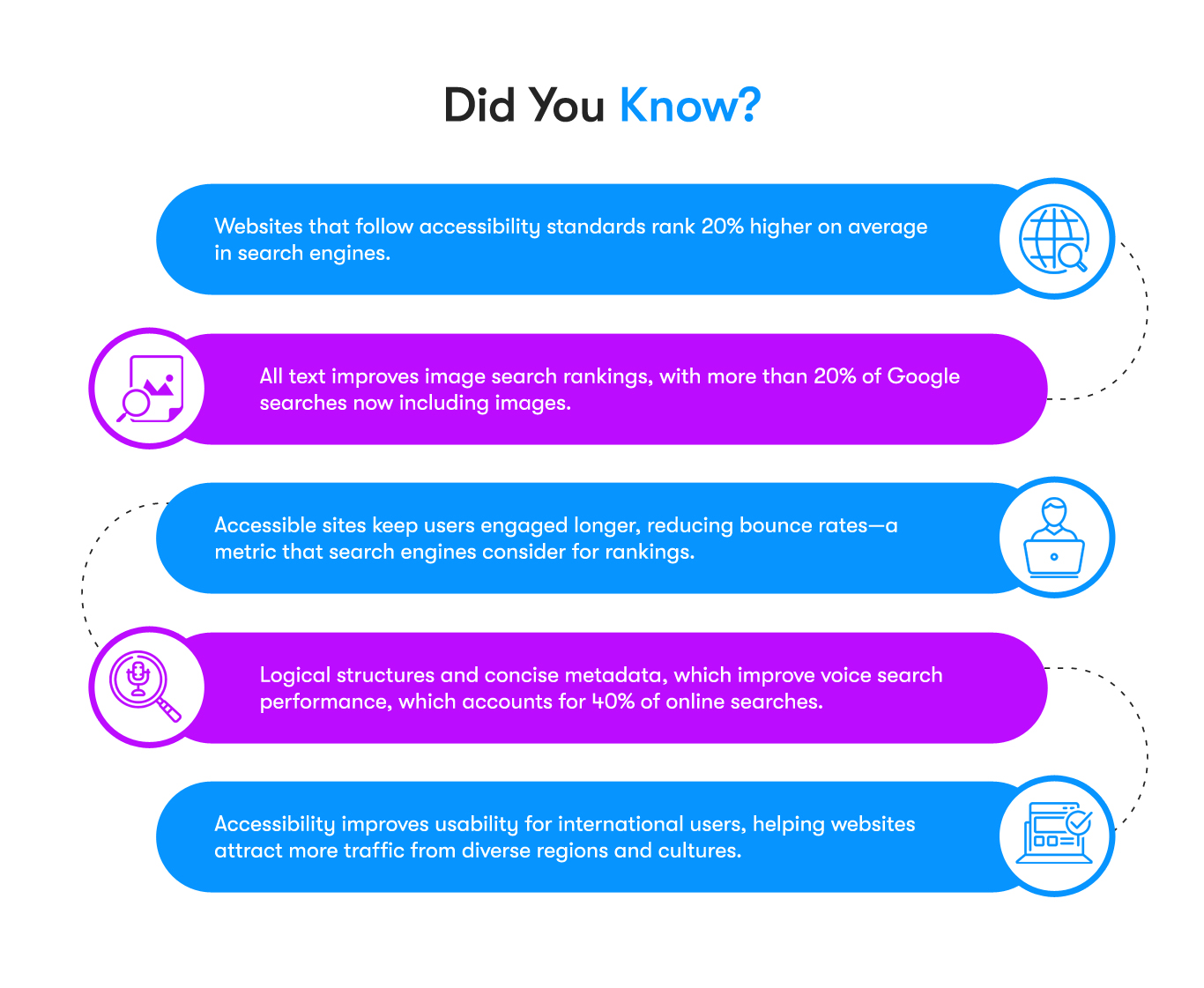Enhance "SEO" Performance
Accessibility and SEO work together to create a better online presence. By implementing accessibility practices, websites use clean code, semantic structures, and optimized designs, making them easier for search engines to crawl and rank, driving more organic traffic.
Accessibility Boosts
SEO Performance
1. Clean Code and Semantic Structure
Accessible websites rely on semantic HTML and clear code, ensuring search engines can effectively understand and index your content.
3. Faster Page Speed
Accessibility guidelines promote optimizing file sizes and code for faster page loads, a key SEO factor.
5. Improved Navigation
Accessible designs with clear menus, descriptive links, and logical structures aid users and search engines.
2. Descriptive Alt Text
Meaningful alt text improves accessibility for screen readers and boosts image search visibility.
4. Mobile Optimization
Accessible websites are inherently mobile-friendly, aligning with Google’s mobile-first indexing to improve rankings.
6. Enhanced User Engagement
Accessible websites provide a better user experience, increasing time spent on-site and reducing bounce rates.
Did You Know?
- Websites that follow accessibility standards rank 20% higher on average in search engines.
- Alt text improves image search rankings, with more than 20% of Google searches now including images.
- Accessible sites keep users engaged longer, reducing bounce rates—a metric that search engines consider for rankings.
- Logical structures and concise metadata, which improve voice search performance, which accounts for 40% of online searches.
- Accessibility improves usability for international users, helping websites attract more traffic from diverse regions and cultures.

Don’t Believe Us?
Hear Airbnb’s
Story!
When Airbnb made their site more Accessible, they didn’t just help users with disabilities — they caught Google’s attention too. By adding alt text for images, keyboard navigation, and video captions, they improved SEO rankings and saw a spike in traffic and bookings. Lesson for You: Accessibility isn’t just good for people — it’s great for Google too.
Maximize Your SEO Potential
By combining accessibility and SEO, your website can rank higher, attract more traffic, and provide an inclusive experience for all users.